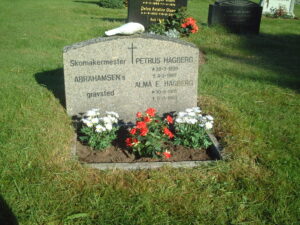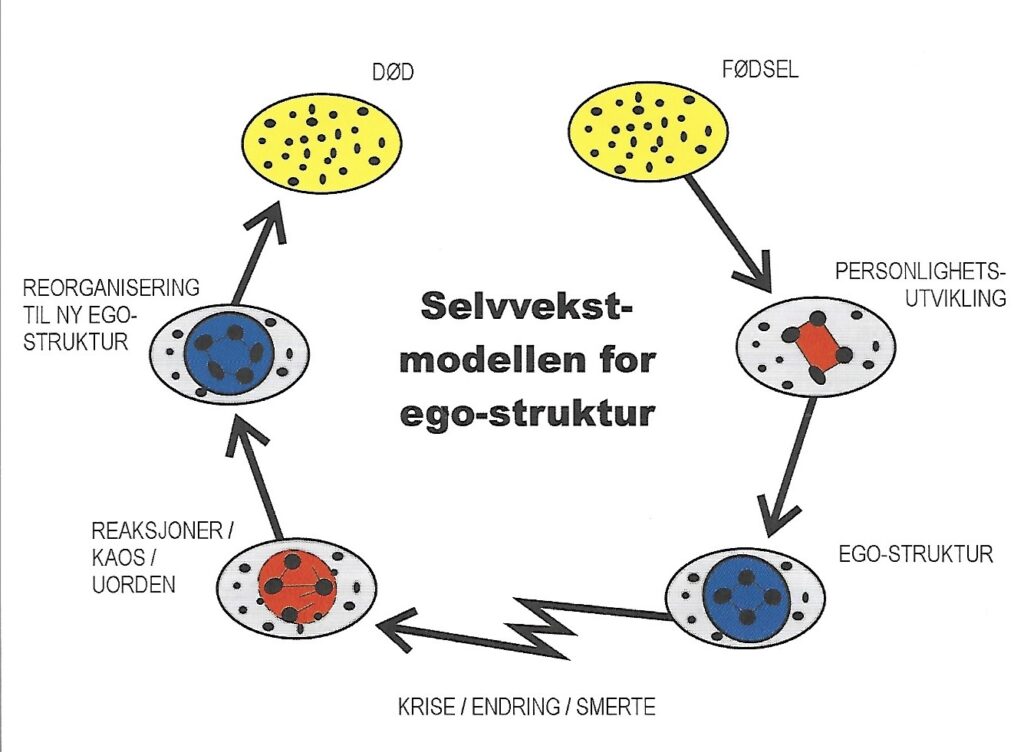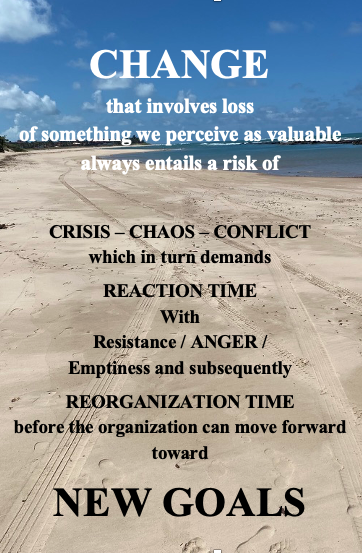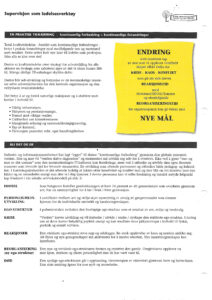


Follow the Cyclical model, step by step.

2 / PERSONALITY DEVELOPMENT
In the intersection between nature and nurture, there is a visible selection of genetic potential forming the core of individual traits and characteristics
3 / EGO STRUCTURE
During puberty, the preliminary ego structure is formed, shaped by heredity, environment, and value choices
4 / CRISIS, CHANGE
and PAINThe “world” demands development and seeks to improve / expand / change / reinvent the established ego structure. This often requires significant psychological energy and may lead to considerable strain in terms of physical, mental, and social well-being.
5 / REACTIONS
The established ego structure breaks down and disintegrates. A strong sense of chaos and disorder arises. Everything becomes fluid, and new inner resources must be activated to cope with the discomfort. New character traits may emerge
6 / REORGANIZATION
(New Ego Structure)
The new and expanded ego structure takes root and replaces the old one. The surrounding environment experiences the individual as more open, resilient, and enriched.
7 / DEATH
The visible ego structure dissolves. Regeneration continues through children and grandchildren. This final transformation opens the door to something new and different
The industrial and information society has laid the “egg” for this “continuous improvement” through the global internet world. More and more, the “world sets the agenda,” and humans must evolve to survive. Not by doing “more of the same” as the human-created AI culture tends to promote, but by exploring and developing their own inherent resources as living souls for other living people. This development is already provoking and challenging educators and leaders alike. In the knowledge industry, it is increasingly clear that the pursuit of creativity and quality is becoming a path inward—towards new sources and a different kind of energy than what we know today.
This process, based on research and insight, was also illustrated by our Double-Loop-Model we described in LESSON 3,2

Total quality management – understood as continuous improvement – in practice means changes that bring about unrest and resistance as a result.
This places entirely new demands on leadership as a profession. Not everyone is aware of this!
Therefore, quality management without a strategy for personal development for all actors becomes a life-lie that sabotages much of what could otherwise have been achieved. Many poor TQM experiences are due to this.
Thus, personal development and renewal of human resources become the actual success criteria for the learning organization and for successful quality management.
This means recognizing and understanding natural reactions and establishing counterforces in relation to:
I wrote these words in my book Death, Without Sting, published by Gyldendal Norsk Forlag in 1979.
The many, many years since have gifted me the lived experiences I could only imagine as a young writer.
Such is life. No one escapes the lightning strikes of existence — our own, personal storms.
It may be the loss of a job, a divorce, a broken heart. The death of a child or a beloved relative. Or the slow, aching loss of one’s own health — becoming dependent on treatment, on help, on others.
In these moments, some will strive with all their might to reclaim what was lost — to make things “as they were.” – Others may lose hope and remain frozen in their pain, until the weight becomes too much to bear. – But there is, perhaps, a third path.

SGL describes it as staying with the unbearable — a little longer than comfort allows — before beginning the long walk toward a new and different life.
In everyday language, some call it the school of life. – It teaches not through textbooks, but through wounds. Through change. Through endurance. Through a kind of growth that no one seeks, yet becomes a hidden strength we carry with us.